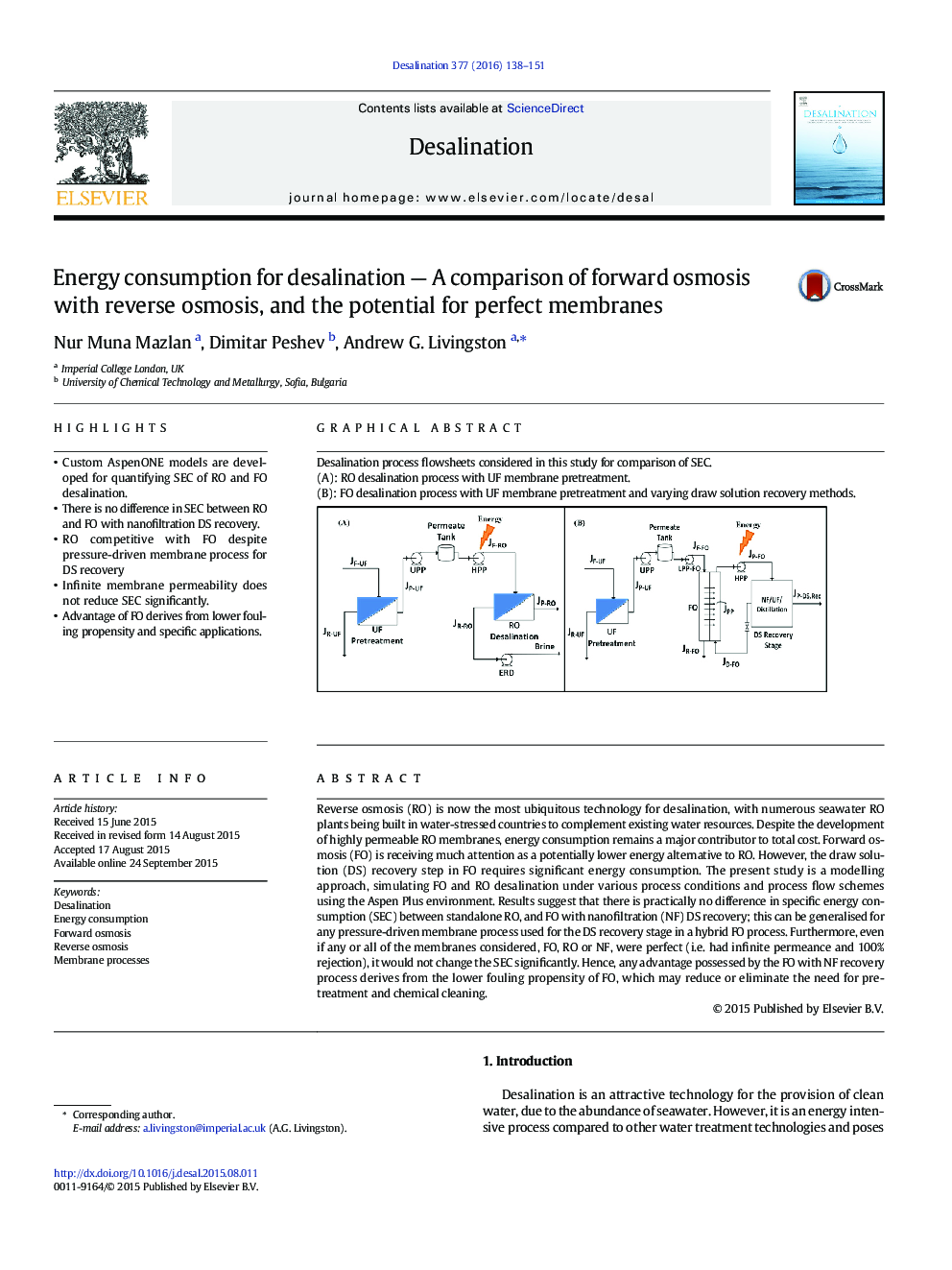| Article ID | Journal | Published Year | Pages | File Type |
|---|---|---|---|---|
| 623007 | Desalination | 2016 | 14 Pages |
•Custom AspenONE models are developed for quantifying SEC of RO and FO desalination.•There is no difference in SEC between RO and FO with nanofiltration DS recovery.•RO competitive with FO despite pressure-driven membrane process for DS recovery•Infinite membrane permeability does not reduce SEC significantly.•Advantage of FO derives from lower fouling propensity and specific applications.
Reverse osmosis (RO) is now the most ubiquitous technology for desalination, with numerous seawater RO plants being built in water-stressed countries to complement existing water resources. Despite the development of highly permeable RO membranes, energy consumption remains a major contributor to total cost. Forward osmosis (FO) is receiving much attention as a potentially lower energy alternative to RO. However, the draw solution (DS) recovery step in FO requires significant energy consumption. The present study is a modelling approach, simulating FO and RO desalination under various process conditions and process flow schemes using the Aspen Plus environment. Results suggest that there is practically no difference in specific energy consumption (SEC) between standalone RO, and FO with nanofiltration (NF) DS recovery; this can be generalised for any pressure-driven membrane process used for the DS recovery stage in a hybrid FO process. Furthermore, even if any or all of the membranes considered, FO, RO or NF, were perfect (i.e. had infinite permeance and 100% rejection), it would not change the SEC significantly. Hence, any advantage possessed by the FO with NF recovery process derives from the lower fouling propensity of FO, which may reduce or eliminate the need for pre-treatment and chemical cleaning.
Graphical abstractDesalination process flowsheets considered in this study for comparison of SEC. (A): RO desalination process with UF membrane pretreatment. (B): FO desalination process with UF membrane pretreatment and varying draw solution recovery methods.Figure optionsDownload full-size imageDownload as PowerPoint slide
